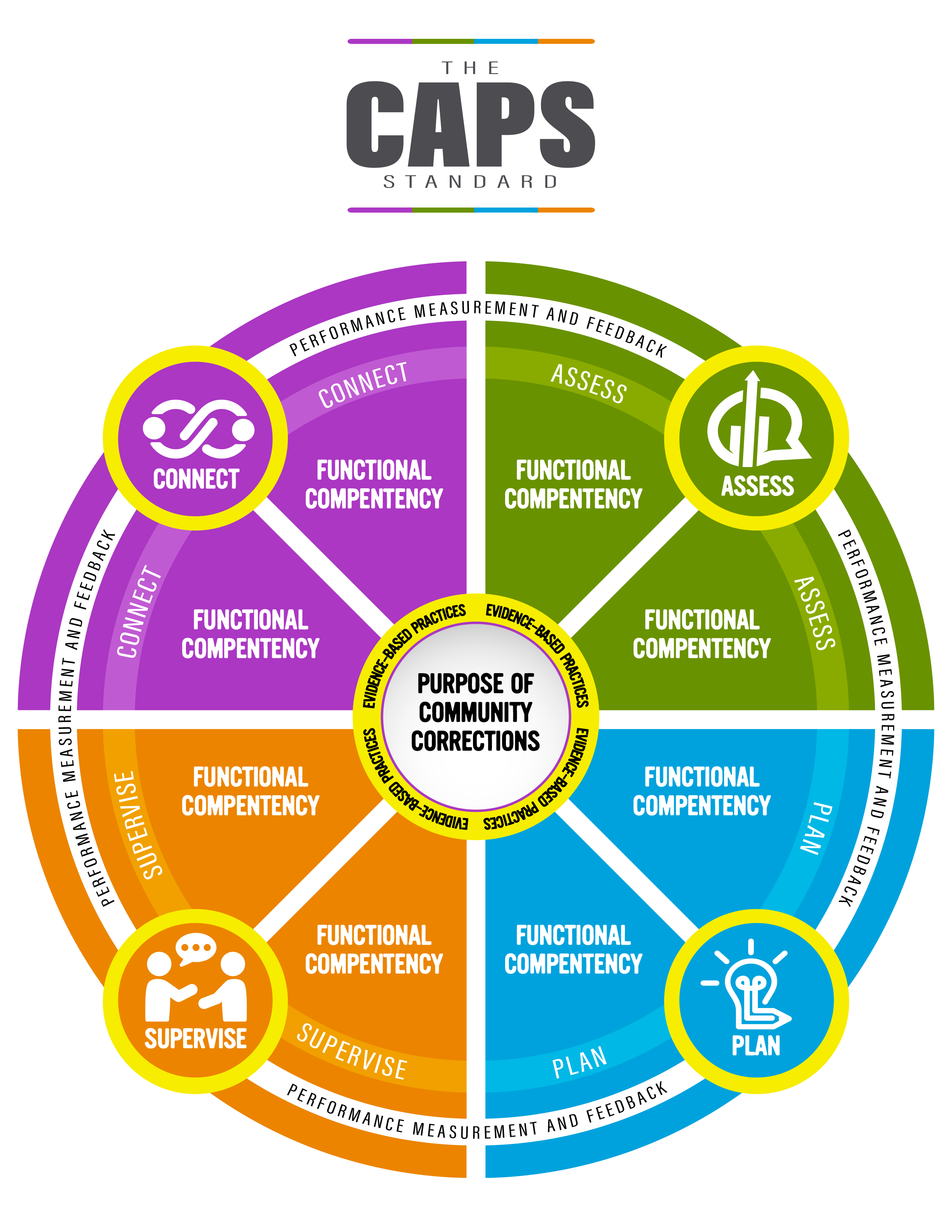The Evolution of the CAPS Standard
The CAPS Standard may be new, but it builds on many years of work by the National Institute of Corrections (NIC) on evidence-based practices (EBPs).
Timeline
2004
NIC publishes Implementing Evidence-Based Practice in Community Corrections, which included the better- known Eight Guiding Principles
2005
NIC publishes an EBP Quality Assurance Manual titled Implementing Evidence-Based Practice in Community Corrections: Quality Assurance Manual
2008
NIC publishes the second edition of Implementing Evidence‐Based Policy and Practice in Community Corrections
2011
NIC publishes Putting the Pieces Together: Practical Strategies for Implementing Evidence-Based Practices
2020
NIC launches an update of the EBP material with the dual goal of making it easier to use
2024
The CAPS Standard microsite goes live on NICIC.gov
CAPS Is a System Reboot
Think of the CAPS Standard as a system reboot to the NIC’s landmark study, Evidence-Based Practice in Community Corrections, originally published in 2004. This new iteration is meant to be easier for practitioners to use. Here's a brief history of how this study has evolved.
Nothing Works vs What Works vs Evidence-Based Practices
NIC’s evidence-based model for community supervision was developed out of research into correctional treatment interventions. In its early days, the model went by “What Works” and was meant to refute the “Nothing Works” conclusion regarding correctional treatment that had a brief heyday in the 1970s. The What Works body of knowledge grew over the next couple of decades due partly to NIC’s support of conferences and training focused on the research.
In the 1990s, the term “evidence-based practice” (EBP) emerged from the medical field, signaling an effort to ensure medical professionals would rely on the latest, proven clinical practices. Other fields such as education, social work, and addiction treatment soon began to adopt the term and advocate that practitioners use the latest, research-supported practices.
NIC chose to adopt evidence-based practices for better accuracy and to align with similar efforts in other fields. In community corrections, evidence-based practice implies a link with specific, measurable outcomes, such as lower recidivism, higher job retention for people on supervision, and higher satisfaction levels among victims of crime.
The Original Publication
NIC first published a resource on EBPs for community corrections in 2004. (There were several additional resources published in the seven years after, too.) Technically titled, Evidence-Based Practice in Community Corrections, it is commonly referred to as “The Eight Guiding Principles.” The publication brought together key elements of the research on reducing recidivism and supporting positive behavioral change in persons under supervision.
The model acknowledged that the principles need to be applied at the case level as well as in an agency’s leadership and internal systems. Though the ideas were sound, putting them into practice would take more work.
Introducing the CAPS Standard
In 2020, the NIC launched a project to present the Eight Guiding Principles in a new way. Conversations with practitioners and researchers confirmed that NIC’s publications on EBP were not widely read. The research remained out of reach for most community corrections agency staff.
NIC agreed with a proposal to develop an online resource to present the principles in a dynamic, user-focused format. The CAPS Standard and a new website (This website!) was developed to include a variety of learning tools and guides for all agency staff to tap into with ease.


Pictured here: The original Eight Guiding Principles, each represented by its own colorful ribbon. Together, all the ribbons operate together in an upward-leading system.

Now that you know how the CAPS Standard came to be, learn more about how it can work for you here (LINK).

